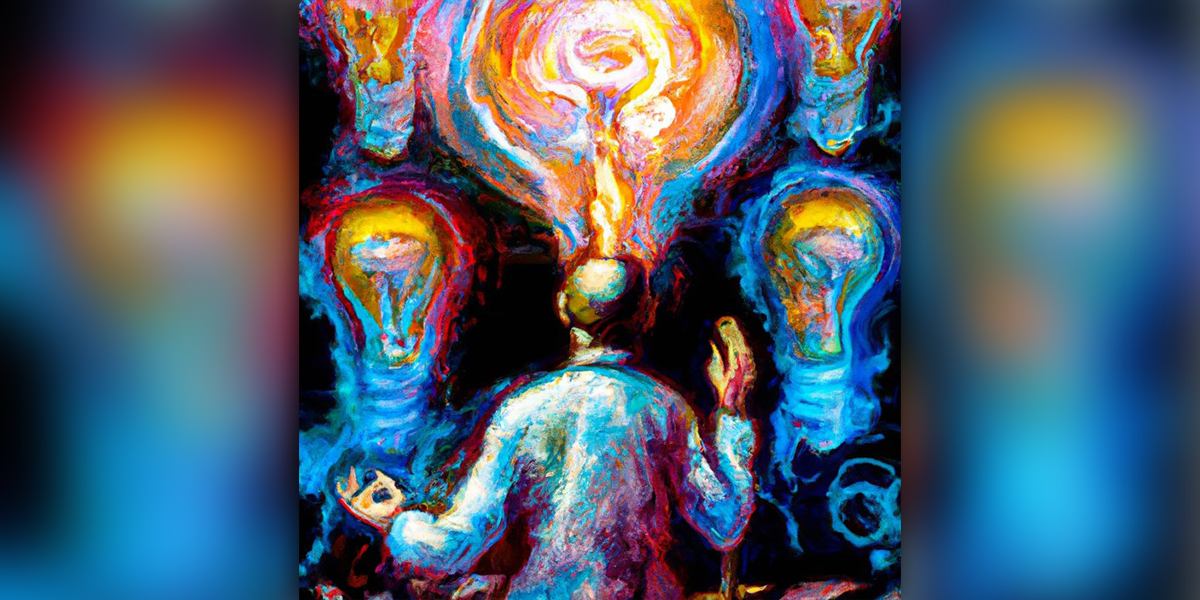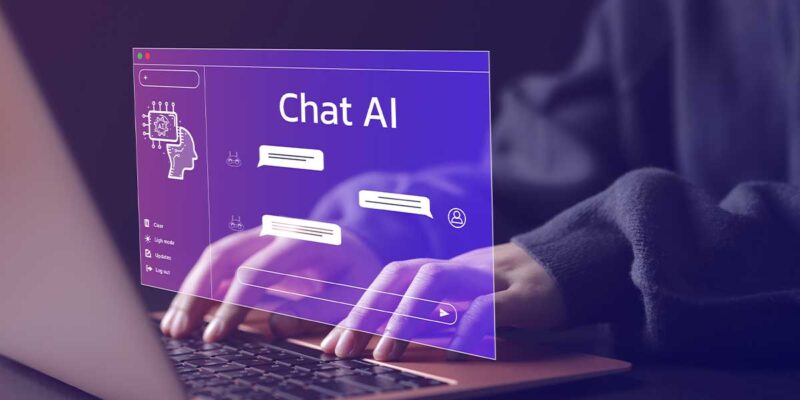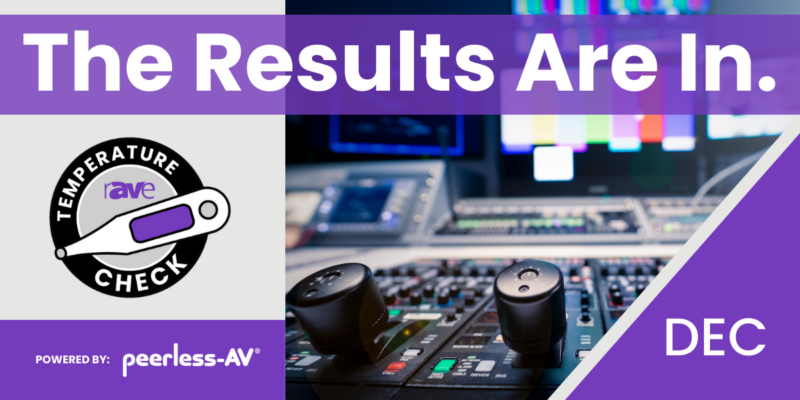The Importance of AI in the Audiovisual Industry

An abstract painting of Artificial Intelligence, art by DALL·E 2
By ChatGPT and Bob Snyder
AI (artificial Intelligence) is often mistakenly dismissed as a social media parlor trick, while on the other hand, we fear a dystopian future where humans can’t compete with their own creation.
What AI really is, in the near future, is the next computer paradigm — a way to leverage computer automation and machine learning to create time-saving tools that can not only perform tasks but can anticipate that those tasks are needed.
AI will sneak up on us, penetrate our industry without us fully grasping the impact as this technology is embedded, software driven — you’ll see only the result and many times it won’t be labelled “AI.” In fact, it’s more likely that things which are not AI will be called AI for marketing purposes.
But why listen to me when we can ask AI how it can help the ProAV industry in the near future? Here’s what ChatGPT wrote. The article you are about to read — and the associated art — is 99.1% created using OpenAI’s ChatGPT and DALL·E 2. My .9% contribution was to splice: I never changed a word.
Artificial intelligence (AI) has become increasingly important in the professional audio/video industry in recent years. Here are some of the ways in which AI is being used:
Video and audio editing:
AI can help automate certain aspects of video and audio editing, such as color grading and sound mixing. This can save time and improve the quality of the final product.
Speech recognition:
AI can be used to transcribe spoken words into text, which can then be used for closed captioning, subtitling, or as a basis for translating into other languages.
Content recommendation:
AI can analyze a viewer’s watching habits and recommend other content that they may be interested in, based on their preferences.
Quality control:
AI can help detect issues with video and audio quality, such as poor lighting or distorted sound, and automatically correct or flag these issues for a human editor to fix.
Virtual assistants:
AI-powered virtual assistants can help automate routine tasks, such as scheduling appointments or sending emails, allowing professionals in the industry to focus on more creative work.
Meeting rooms:
AI can be used to automate camera movements or adjust lighting based on the movements.
AI-powered meeting rooms can automate several tasks, such as scheduling, taking notes, and sending reminders, thus saving time and improving efficiency.
AI technologies like video conferencing, screen sharing, and real-time translation can help teams collaborate seamlessly, irrespective of their location and language barriers.
AI can analyze data about meeting attendees and their preferences to tailor the meeting experience, such as adjusting the room temperature or offering refreshments.
AI can analyze meeting data, such as attendance and engagement levels, to provide actionable insights for improving future meetings.
AI-powered meeting rooms can offer accessibility features such as speech-to-text, closed captioning, and sign language translation, making meetings inclusive for all participants.
Smart workplace:
AI can automate repetitive tasks, allowing employees to focus on more critical tasks that require their expertise.
AI-powered tools can help employees work more efficiently by providing them with real-time insights and data that help them make informed decisions.
AI can personalize the workplace experience for employees, making it more engaging and enjoyable.
AI-powered devices can enhance safety in the workplace by monitoring employee behavior and identifying potential safety hazards.
AI can help companies save money by reducing operational costs, improving efficiency, and minimizing errors.
Live events:
AI can be used in live production to automate camera movements or adjust lighting based on the movements of performers.
AI can help personalize the live event experience by analyzing attendee data and tailoring content and activities based on their preferences.
AI-powered technologies such as chatbots, virtual assistants, and interactive displays can help keep attendees engaged and connected throughout the event.
AI can provide event organizers with real-time insights into attendee behavior, preferences, and feedback, helping them make informed decisions on the fly.
AI can help automate mundane tasks such as scheduling, registration, and ticketing, freeing up event organizers to focus on creating a more engaging and memorable experience.
AI can help enhance safety and security at live events by monitoring crowd behavior and identifying potential threats before they escalate.
Overall, AI can help improve the efficiency, quality, and accuracy of tasks in the professional audio/video industry, allowing professionals to focus on more creative and complex tasks.
Editor’s note: Yep, I added the boldface to the text. No one has thought yet about teaching a computer to do that. But they will.




